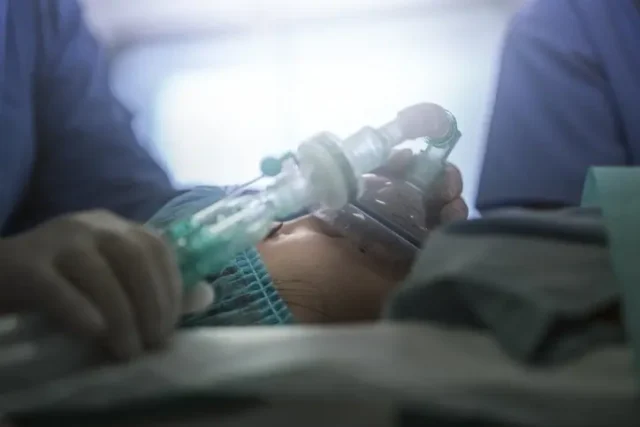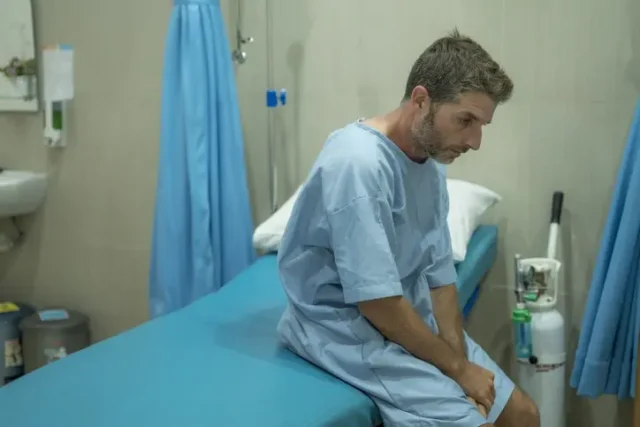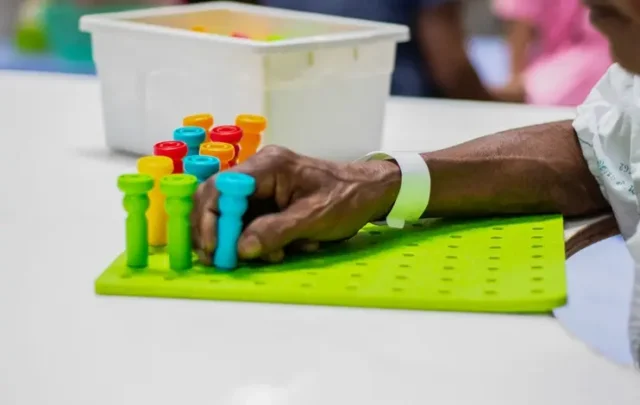Facing a traumatic brain injury (TBI) after an accident can be a harrowing experience, but know that recovery may be possible. The 10 stages of brain injury recovery may take months or years to complete. Despite this length of time, a 17,470-patient study found astonishing results:
“57% of patients experienced initial loss of consciousness, which persisted after acute care treatment in 12% of patients. However, 98% of these patients recovered consciousness by the end of subsequent inpatient rehabilitation…”
–Robert G. Kowalski, MBBCh, MS1,2; Flora M. Hammond, MD3; Alan H. Weintraub, MD2,4; et al
Loved ones may feel that progress is slow or even regressed as time goes on. While you’re helping your injured loved one, you may encounter steep medical bills or therapy costs. If the accident was caused by another party, however, you may qualify for compensation for your damages.
Let the guilty party pay for your loved one’s recovery fees. If you need legal representation to fight for your rights, call our 500+ law firm network at LegalASAP. You deserve peace of mind as your loved one goes through the healing process.
Free Personal Injury Evaluation
Weren't at-fault for your accident? Click here to speak with a nearby attorney for FREE about your personal injury claim.
or call (888)-927-3080
The Stages of Brain Injury Recovery
The Rancho Los Amigos Scale (RLAS) is widely used by physicians to categorize brain injuries based on their progress towards recovery. The length of each stage depends on your loved one and their condition.
Serious brain injuries may take between two and four years to recover from. Milder TBIs may only take a few days or weeks for symptoms to vanish. That’s why it’s important to speak to a medical professional to understand the extent of one’s injuries.
Stage 1. Coma

An especially severe brain injury may leave your loved one in a coma, unresponsive even with stimulation. This is considered the first stage of healing as the brain can focus its resources on recovering from injuries uninterrupted. Typically comatose patients require external help for respiratory and cardiac functions.
The common characteristics of a coma include:
- Unresponsiveness
- No eye movement
- Unintentional or no speech
The Glasgow Coma Scale (GCS) is commonly used to measure the impairment of a patient’s consciousness after a TBI. This scale ranks a coma based on three factors:
- Eye response
- Verbal response
- Motor response
Even though pre-existing conditions may affect the GCS, it’s accurate in measuring how severe your loved one’s coma has become. The GCS may prove helpful for your lawsuit because it proves the extent of your losses due to someone else’s negligence. Your attorney needs this info to properly fight for your rights.
Stage 2. Vegetative State

Unlike a coma, victims in a vegetative state are awake, but they still don’t show signs of awareness. They may exhibit complex reflexes like eye movement and involuntary reactions to stimuli, but they don’t have consciousness of themselves or their surroundings.
Typical symptoms of a vegetative state include:
- Sleep-wake cycles
- More complex movements like yawning, chewing, and swallowing
- Reflexes when startled or receiving stimuli
- Slow eye movement
Victims in a vegetative state may not need external help for respiration and cardiac function, but medical personnel must always be on stand-by.
Vegetative states that last for a long time (> 1 month) fall into two categories:
- Continuous vegetative states – lasting for more than 4 weeks
- Permanent vegetative states – lasting for more than 6 months if caused by a non-traumatic brain injury, or 12 months if caused by a TBI
Patients living in a permanent vegetative state are unlikely to come out of their condition, but it is possible.
Stage 3. Minimal Consciousness

During this stage of brain injury recovery, the patient may regain faint awareness of themselves or the environment around them. Patients exhibiting minimal consciousness may:
- Give yes-and-no responses
- Respond to simple commands
- Give intelligible verbal responses
Minimal consciousness may be infrequent and can waver or come back at any time. Both minimal consciousness and the vegetative state have continuous and permanent categories that depend on the condition of the patient. Just like the vegetative state, the longer the patient stays in minimal consciousness, the lower the chance of recovery.
Doctors have a hard time diagnosing a patient as minimally conscious vs. a vegetative state. There have been false-positives where they diagnosed a patient as vegetative while they showed signs of minimal consciousness and vice versa.
“Studies suggest the rate of misdiagnosis of the vegetative state/unresponsive wakefulness syndrome is between 30–40%.”
–Peterson, A., Cruse, D., Naci, L., Weijer, C., & Owen, A. M. (2015). Risk, diagnostic error, and the clinical science of consciousness. NeuroImage. Clinical, 7, 588–597.
A person is usually diagnosed as minimally conscious based on their length and extent of consciousness on a day-to-day basis. If a doctor has misdiagnosed your loved one due to medical malpractice, you may have a claim to sue.
Stage 4. Post-Traumatic Amnesia

The patient progresses to the 4th stage of brain injury recovery where they regain consciousness, but suffer post-traumatic amnesia. Recalling past events or creating new memories may be harder during this period of recovery. Blunt force impact, like from a car accident, typically causes victims to suffer from amnesia.
There are two types of amnesia patients may suffer from during this recovery stage:
- Retrograde Amnesia – the inability to recall past memories
- Anterograde Amnesia – unable to create new memories, including those of day-to-day events
Your loved one may act erratically during this period, especially if their frontal lobe was damaged. They may not know they have a brain injury, or fail to recognize family members who visit them regularly.
Once patients consistently remember day-to-day events, they’re taken to a rehabilitation center to continue their journey to recovery.
Later Stages of Recovery

The later stages of brain injury recovery involve gradually restoring a victim’s independence and cognitive skills as their brain heals. They have a greater grasp of day-to-day events, but still act erratically while requiring a memory aide.
Your loved one may need medication and frequent visits to a rehab center to further their journey to recovery. These medical costs add up fast. If these incidents were caused by someone else’s negligence, consider hiring a personal injury attorney to help pay for your damages.
Stage 5. Inappropriate Behaviors
A patient in this stage of recovery may have difficulties focusing on their surroundings or focusing on tasks. They may be frustrated with multi-step tasks, but their memory is starting to return compared to the previous stage. Their way of communicating may not make sense, or they have trouble responding during conversation.
Stage 6. Confusion
The patient is more capable of following commands and carrying brief conversation, but memory gaps still persist. Their memory defects cause them to lack safety concerns for their surroundings.
Stage 7. Automatic and Appropriate
This stage is crucial for brain injury recovery because patients begin to independently finish tasks through a strict schedule. They may have trouble planning ahead or completing activities themselves, so they cannot live yet on their own. Even so, their cognitive skills have greatly improved from the previous stages.
Stage 8. Purposeful
A patient’s memory and self-awareness greatly improves once they reach this stage of the recovery process. They regained a large portion of their independence and can largely complete activities without supervision.
They may still struggle with social interaction and situations outside of their routine. However, once they reach this stage of healing, they may return home and start community involvement.
Stages 9 and 10. Purposeful and Independent
Patients in this stage of recovery are capable of planning for the future while responding to the needs of others. They may need further assistance throughout their lives, but they can now perform most tasks on their own. They may still feel side effects from their injury throughout the day, but they developed coping mechanisms around it.
Long-Term Effects of a Traumatic Brain Injury

The long-term effects of a traumatic brain injury depend on where the brain injury took place.
Different areas of the brain are responsible for the bodily functions you use every day. If those areas are damaged, you may have trouble recalling memories or understanding concepts. If certain areas in your brain are damaged, especially near the spinal cord, you may have difficulty breathing or experience organ failure.
Compared to other fields of study, neuroscience is relatively new, only gaining traction in the 1960s. Because of this, new data about the brain is published every day, each study reaffirming or refuting the last. Even so, scientists know that even a mild traumatic brain injury can have long-term effects on your physical and emotional health.
Costs to Recover From a Traumatic Brain Injury
The medical costs to recover from a traumatic brain injury can reach tens of thousands of dollars. The average cost of an ICU stay for patients with a TBI was $4,848 according to a 126-patient study. Not only hospital bills, but fees for proper medication and therapy add up as your loved one continues recovery.
This does not account for the emotional distress you and your loved one feels as you navigate through a TBI. The unseen emotional damages may sometimes be greater than the bills and fees from an accident.
Fight to Cover Your Losses with a Personal Injury Attorney
It shouldn’t be right for you to shoulder the financial and emotional burden of an accident that wasn’t your fault. Don’t hesitate to call a personal injury attorney, even if you don’t know the worth of your case. Most PI attorneys work under contingency, meaning you won’t owe them anything until your settlement arrives.
If you’re having trouble finding an attorney, we at LegalASAP have 500+ law firms around the United States ready to hear you out. Know that there’s a deadline to file your claim against the other party called the statute of limitations. If you fail to file on time, the court may reject your case.
Jan Reburiano is a content writer and SEO specialist for law firms focusing on personal injury, disability, employment law, among other practices. He has written and edited numerous articles and created commercial spots for broadcasters that you can find in his LinkedIn. Jan currently lives in Los Angeles, California while writing for clients from around the United States.


